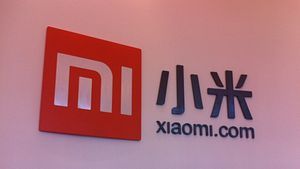Xiaomi, the six-year-old Chinese mobile phone maker, recently announced the launch of its mobile payment service, Mi Pay, developed in consortium with Chinese banking network Union Pay. Users of the service, which was first unveiled in April, can simply link their bank and transportation cards with the Mi Wallet app and make a payment by placing the phone near the sensor of a “QuickPass” marked point of sale (POS) machine. The system can work without an internet connection and the verification procedure only entails inputting fingerprints. So far, Mi Pay supports bank cards from up to 20 banks and transportation cards in six cities. Essentially predicated on electromagnetic Near Field Communication (NFC) technology, this service currently only works on the Mi5, the flagship device for China’s leading smartphone producer. If the phone is accidentally lost, users can cancel the Mi Pay service on Xiaomi’s official website and trace the phone through Xiaomi’s cloud service.
“We believe that Mi Pay will be a key driving force in promoting the development of China’s mobile payments industry, and deliver much more convenience to our users,” said Lei Jun, the founder and CEO of Xiaomi, in the announcement. According to e-Marketer, a research company, the number of people in China using mobile payments at the POS more than doubled in 2015. In 2016, that figure is expected to shoot up to 195.3 million people, well above the United States, which will have only 37.5 million mobile payment users. Analysts at e-Marketer attribute the gap to China’s less deeply entrenched credit card culture, the willingness of users to store payment information in their phones, and the high comfort level of e-commerce.
Despite the lucrative market, Lei and Xiaomi should expect cutthroat competition.The battlefield is packed with not only other handset giants like Apple, but more prominently with Internet behemoths such as Alibaba. Apple Pay, also developed in partnership with Union Pay, made its debut in China in February while Samsung followed suit a month later. Another Chinese telecommunications equipment supplier, Huawei, also rolled out its own service one day earlier than Xiaomi. These three mobile phone vendors — especially Huawei which ranks number one at the moment according to figures from research firm IDC — are Xiaomi’s deadly rivals in the Chinese market.
Xiaomi, known for the razor thin profit margin on its products, has been eagerly seeking to emerge from this stiff competition. Its Mi brand umbrella already includes a sprawling range of smart devices, from Android TV set-top boxes and smartphone-controlled rice-cookers to a freshly launched virtual reality headset. Entering into the mobile payment arena could be seen as the latest move in the Beijing-based company’s aggressive quest for greater market share, as Xiaomi’s dominance has been declining in China since the end of last year according to IDC. As an analyst at IDC earlier told South China Morning Post,“The mobile payment service is becoming increasingly important as vendors seek out ways to lock users into their ecosystem, or to increase users’ brand loyalty with the different vendors.”
Nevertheless, the most prominent incumbency advantage in mobile payment is enjoyed by Alipay from Ant Financials, the financial subsidiary of Chinese e-commerce Goliath, Alibaba Group. Alipay occupied a lion’s share of more than 47 percent of the total online transactions last year, according to iResearch, a Chinese consulting company. Tenpay, from Internet conglomerate Tencent, also claims a remarkable 20 percent share. These two dotcom giants’ financial arms have squeezed the market share of Union Pay’s online transactions to a minimum, forming the latter’s impetus to forge the alliance with smartphone vendors.
Meanwhile, Ant Financials raised $4.5 billion in its Series B financing round and was valued at $60 billion earlier in April. It ranks as one of the world’s most valuable private companies alongside Xiaomi, valued at $45 billion after having raised $1.1 billion in 2014. In a joint bid with Primavera Capital, Ant Financials purchased a $460 million stake in Yum Brands’ China business earlier this month. According to the CEO Jing Xiandong, this bid will facilitate Alipay render mobile payment services for Yum Brands customers, expanding Alipay’s global outreach.
Alipay and Tenpay allow users to pay at the POS via a QR code, which is picked up by the merchants’ scanner. It authenticates the customers’ information and then deducts a certain amount from their wallets. Though the NFC’s tokenization technology arguably undertakes transactions in a more secure manner, QR code payment is more cost-effective as it is based on O2O cloud services and avoids the hassle of having to embed additional hardware into phones and POS machines. Most merchants’ scanners are integrated with QR code scanning hardware and most mobile phones are adorned with QR code scanning and generation features.
Given Alipay’s considerable customer base and the advantages of QR code payment, Samsung Pay recently partnered with Alipay to allow users to directly access their Alipay account via Samsung Pay even through a locked screen, aiming to boost Samsung Pay’s usage. Mi Pay could tread the same path to offset the incumbency inertia held by Alipay. Also, it could dive into industries that have more rigorous security and ID authentication requirements, such as cigarettes, automobiles, and real estate, etc.
In January this year, Xiaomi acquired 65 percent of Jiefu Ruitong, a Chinese online payment company authorized by People’s Bank of China to obtain the license in this field. In June, it purchased 1500 patents from Microsoft to bolster overseas sales following a lawsuit in India last year.
Lu Chen is an international

































